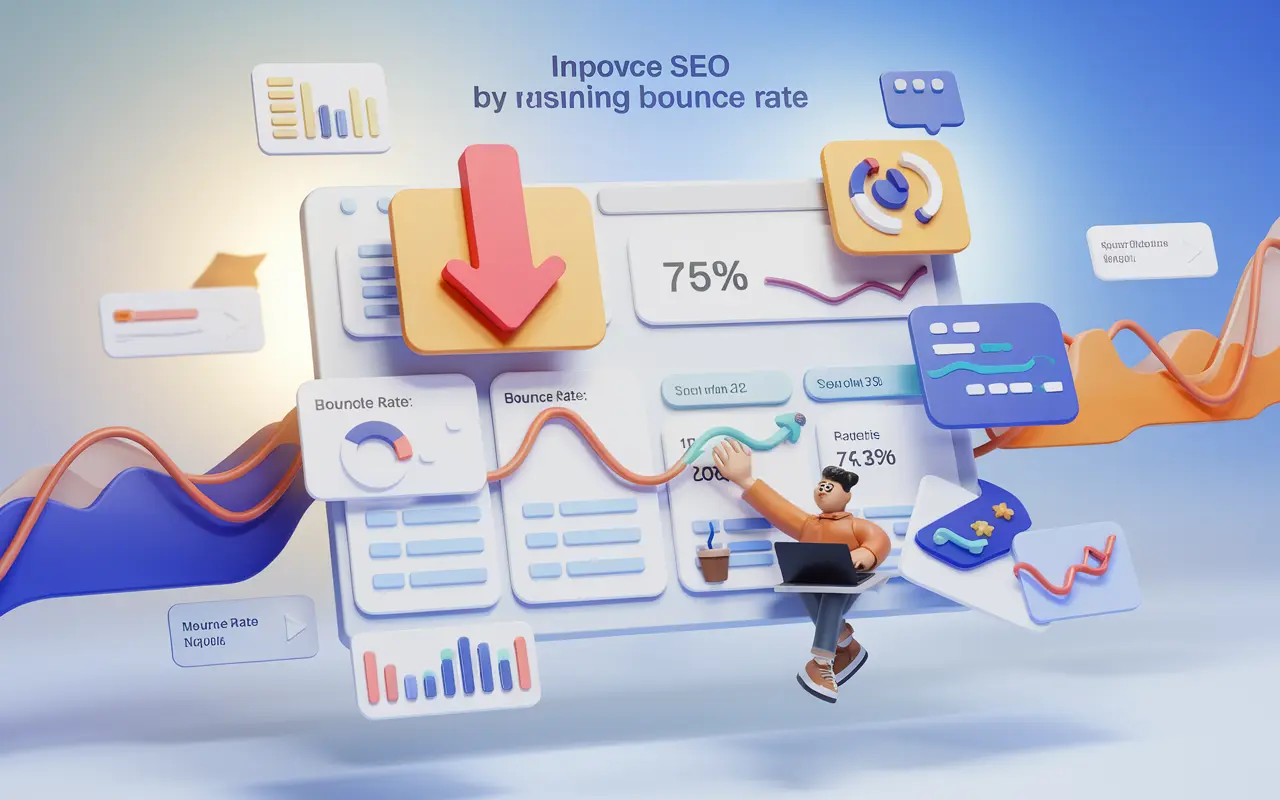What is Bounce Rate?
Bounce Rate is a vital metric in digital marketing and SEO that measures the percentage of visitors who land on a website page and leave without interacting with any other page. Understanding Bounce Rate is essential because it helps marketers and business owners evaluate user experience and content relevance. A high bounce rate may indicate that your page didn’t satisfy the user’s intent or was not engaging enough to encourage further exploration.
In the context of SEO services, Bounce Rate serves as a lens to examine how well your site retains visitors. It influences decisions around content development, navigation flow, CTA placement, and overall digital strategy, ultimately contributing to better ROI and customer retention.
Definition
Bounce Rate is the percentage of website sessions where users enter a website and leave without clicking on another page, form, or section. Technically speaking, this is calculated by dividing single-page sessions by all sessions, then multiplying by 100 to get a percentage.
For example, if 100 people visit a blog page and 70 of them leave without clicking to another page, the bounce rate for that page would be 70%.
Key Takeaway
Bounce Rate is a key user engagement metric that reflects how effectively your web pages retain visitors—crucial for improving SEO rankings and user experience.
Importance for SEO
Bounce Rate is a critical ranking signal in SEO. A high bounce rate can suggest to search engines that your content isn’t relevant or valuable to users, especially when paired with short dwell time. Search engines like Google aim to provide users with the best answers. If users consistently leave your site quickly, search engines may interpret that your page doesn’t fulfill their needs and lower your ranking.
Improving your Bounce Rate not only helps SEO performance but also boosts customer satisfaction and business KPIs. Lowering bounce rate often correlates with higher session duration, more leads, and increased conversion rates.
Best Practices
- Improve Page Load Speed: Use compression tools, lazy loading, and content delivery networks (CDN) to ensure fast-loading pages.
- Optimize for Mobile: Use responsive design and mobile-friendly fonts to enhance mobile usability.
- Create Engaging, Valuable Content: Write content that directly answers users’ queries and include multimedia elements like videos or infographics.
- Use Clear Calls-to-Action (CTAs): Guide your visitors with prominent and clear CTAs leading to further website interaction.
- Enhance Website Navigation: Make sure users can easily move from one page to another through intuitive menus and internal linking.
- Use Scroll Triggers and Anchors: Implement features that encourage continued scrolling and engagement.
How Bounce Rate Works
Bounce Rate works by detecting how many website sessions include only a single interaction. Analytics platforms like Google Analytics utilize a tracking code embedded within each website page. When a user lands on a page, the script records the session. If the user leaves without triggering another event (like clicking a link, filling a form, or visiting another page), that session is counted as a bounce.
Technical Process:
- A user lands on Page A.
- No further engagement is recorded (e.g., doesn’t click another page or trigger an event).
- Session ends and is marked as a ‘bounce.’
- If out of 100 visits, 40 are bounces, your page has a bounce rate of 40%.
| Page Name | Total Visits | Bounces | Bounce Rate |
|---|---|---|---|
| Home Page | 2,000 | 800 | 40% |
| Landing Page A | 1,500 | 1,200 | 80% |
| Blog Overview | 1,000 | 300 | 30% |
Case Study – Improving Bounce Rate to Boost SEO Results
Problem: Extremely High Bounce Rate on Landing Pages
A digital marketing agency noticed their client’s primary landing page had a Bounce Rate exceeding 85%, resulting in poor SEO rankings and low conversion rates. Most users left the site after viewing only the homepage.
Solution: Comprehensive Content Revamp and Technical SEO Fixes
The agency improved page load speed, enhanced CTA placements, optimized for mobile devices, added internal links, and produced more relevant and engaging content. They also introduced exit-intent popups to guide users deeper into the funnel.
Results: Bounce Rate Dropped by 45% and SEO Rankings Improved
The Bounce Rate reduced from 85% to 40% within two months. Alongside, organic traffic increased by 60%, and conversions grew by 35%, boosting overall ROI and search performance.
Common Mistakes to Avoid
- Slow Page Loading: Visitors tend to leave if the site takes more than a few seconds to load.
- Poor Mobile Experience: Not optimizing for mobile devices can frustrate users and increase bounce rate.
- Misleading Titles or Meta Descriptions: If the content doesn’t meet user expectations, they’ll bounce quickly.
- No Clear Navigation or CTAs: Lack of clear paths prevents users from taking the next step.
- Thin or Irrelevant Content: Content must align with user search intent to encourage deeper engagement.
Related Terms
Explore other glossary terms related to Bounce Rate:
- Dwell Time: Measures how long users stay on a page before returning to search results—closely related to Bounce Rate.
- Exit Rate: Tracks the percentage of users who leave your site from a specific page, not necessarily after viewing only one page.
- User Engagement: Indicates how users interact with your content. Higher engagement often leads to lower bounce rates.
Conclusion
Bounce Rate is more than just a metric—it’s an essential insight into user behavior, content performance, and overall website health. A high bounce rate can drag your search engine rankings down, while a low bounce rate often correlates with high engagement and conversions.
To improve your SEO performance and drive sustainable business growth, prioritize reducing your Bounce Rate using the best practices shared above. For more expert guidance, explore our dedicated SEO learning center.






